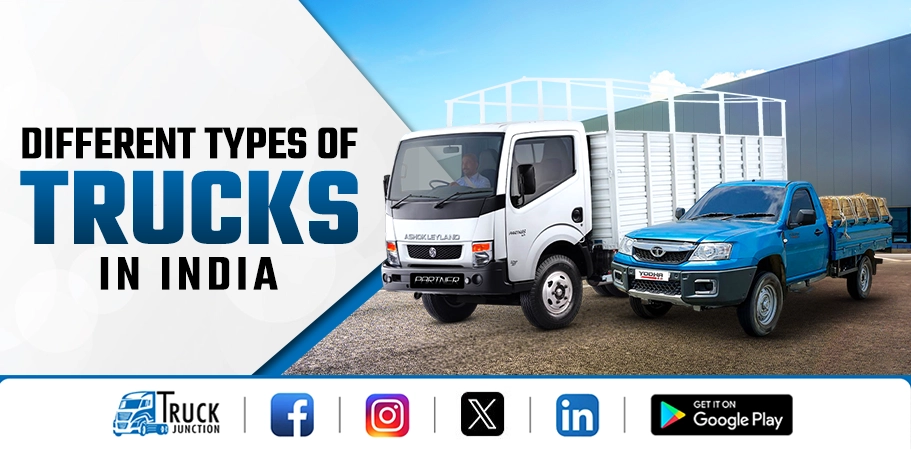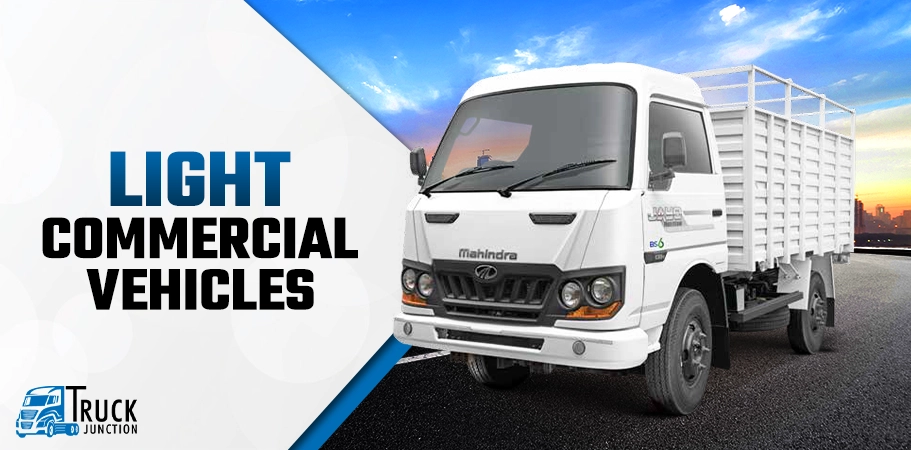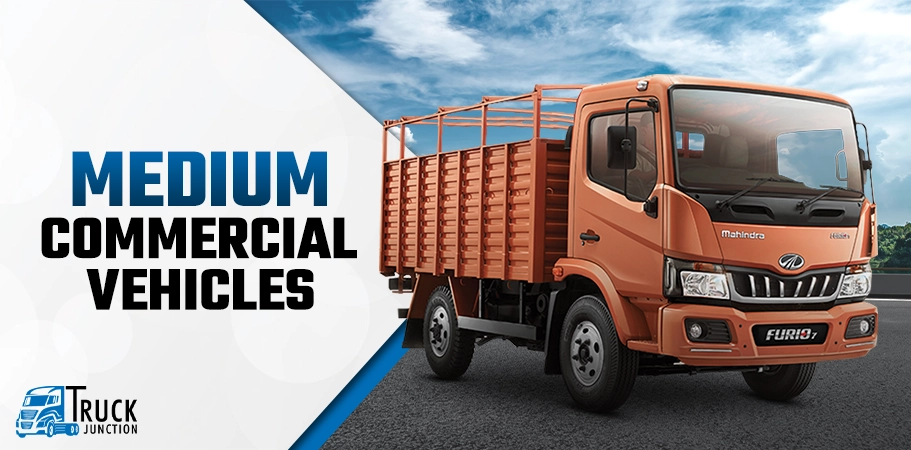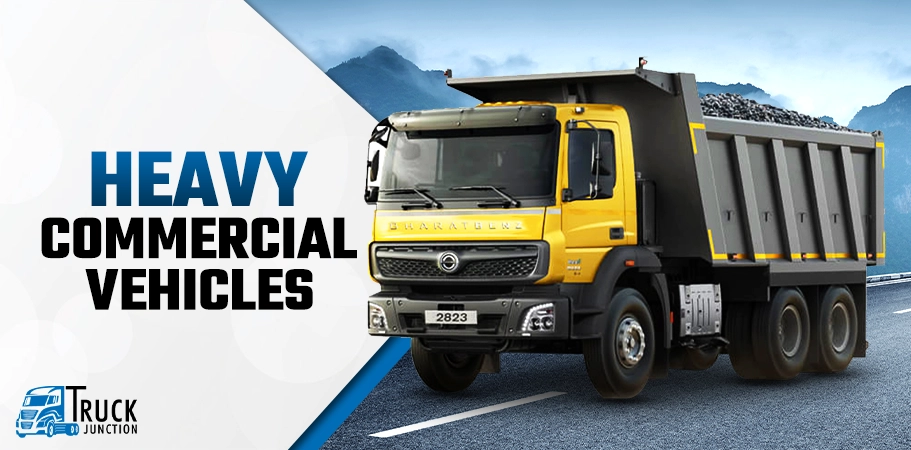Different Types of Trucks in India for Transportation Needs

Exploring the world of different types of trucks on India’s busy roads with diverse ranges, each with its own unique size and features. Whether you’re in logistics, driving, or simply curious about trucks, understanding their different sizes and capabilities is important. This blog will dive into the specifics of Indian trucks, including their dimensions, weight limits, and the types of goods they transport, providing insight into this essential aspect of transportation.
Types of Trucks in India
Trucks are available in a wide range of configurations, and each meets specific requirements. Their widths are the most important criterion when deciding which tasks they are best suited for. The Indian economy relies heavily on trucks for transportation. To make the most of these trucks, it’s important to understand the different types and how they’re used. Further, there are various types of trucks in India for transportation needs.
Light commercial vehicles include all new types of trucks like mini trucks, tiny trucks, cargo three-wheelers, and light-duty trucks. Heavy commercial vehicles include tractor-trailers, semi-trailers, trailers, and low-loaders. Special-purpose vehicles are also crucial, such as those used in construction to transport loose materials, cement mixers, and dumper trucks for rubbish removal.
Light Commercial Vehicles

Light commercial vehicles play a significant role in logistics. This is especially true in cities with limited space and narrow streets. LCVs include both compact and pickup trucks. Their specific use is to transport relatively lighter weights. Many online shops, small businesses, and regional wholesalers rely on these vehicles to make last-mile deliveries.
In India, the standard truck width for LCVs is between 1.5 and 1.9 metres. Because of this, they are great for navigating congested and curving city streets. The reduced profile allows for more movement. It also helps with faster delivery times, which is especially useful in crowded areas.
Because of their small size, LCVs are the preferred choice for businesses looking to deliver things within cities swiftly and efficiently. Tata 710 LPT, Mahindra Jayo, Tata Yodha, and Tata Yodha 2.0 are examples of light commercial vehicles.
Medium Commercial Vehicles

Medium Commercial Vehicles are mid-sized trucks. Their size and cargo capacity are perfectly proportioned. They can meet a wide range of transportation needs in many industries. Multi-purpose vehicles serve a wide range of products and transportation requirements in both intra and intercity operations.
MCV vehicle widths typically range from 2.2 to 2.4 metres. For logistical operations, it provides excellent medium ground. Truck drivers can readily navigate small city highways because they are moderately wide. Furthermore, the size gives adequate cargo space for long hauls between cities. As a result, MCVs have become the ideal choice for businesses seeking a flexible transportation solution. MCVs include Mahindra Furio 7 Cargo Truck, Tata 1412 LPT Truck, Ashok Leyland Partner 6 Tyre, and Ashok Leyland Ecomet 1615 HE Truck.
Heavy Commercial Vehicles

In terms of transportation, Heavy Commercial Vehicles reign supreme. heavy commercial trucks are huge trucks that can carry loads weighing 16 to 49 tons or more. These trucks help with long-distance logistics and heavy-duty applications. Vehicles such as container trucks and large trailers fit into this category due to their power and capacity to move massive things across great distances. HCVs play an important role in the construction, industrial, and large-scale distribution supply chains.
In India, the average HCV truck width is between 2.5 and 2.6 metres. This characteristic allows these trucks to transport large freight more efficiently while navigating difficult terrains and roadways. HCVs are essential for large-scale transportation companies to operate. With their support, one can transport large amounts of products safely and efficiently.
Heavy freight vehicles (HCVs) are an important aspect of the country’s logistics network since they can deliver large loads over great distances. In India, they are extensively used for heavy cargo transportation and can be seen on highways for intercity and interstate travel. HCVs include Tata Signa 1923.K Tipper, Tata Signa 4018.S Trailer, Ashok Leyland 4220 HG Truck, and BharatBenz 2823C Tipper.
Choosing the Right Types of Trucks for Specific Needs
Tailoring the width of all types of trucks in India to specific needs is an important part of guaranteeing efficient and safe delivery. Lorries’ width is critical in determining their suitability for various jobs. Both logistics specialists and shippers must understand these intricacies.
Urban Logistics
Transportation in cities involves unique challenges. Due to space limits and traffic, firms in India must be selective about the width of their trucks. Trucks with smaller widths help in urban environments due to the need for agility. The best solutions for city logistics are LCVs and MCVs, with widths ranging from 2.2 to 2.5 metres. Even in congested areas, these vehicles can manoeuvre easily. They can improve delivery efficiency while lowering congestion on local routes.
Inter-City Transportation
Transporting goods over longer distances requires a different approach. Transporting people and commodities between cities necessitates the use of large, heavy-duty trucks. This is where heavy commercial vehicles (HCVs) with widths ranging from 2.5 to 2.6 metres come into play. These larger trucks have an advantage in terms of cargo capacity, making them suited for the challenges of transporting items over long distances. Because of their strong construction and versatility, HCVs are the way to go when it comes to intercity logistics.
Specialised Cargo
Specific sectors handle shipments with unusual dimensions. This category encompasses excessively large construction materials and machinery. Customised solutions are required for each cargo. Wider vehicles may be required to meet legal requirements and the necessary approvals. The flexibility to modify the vehicle’s width to fit the load’s individual requirements ensures the safe transportation of specialty commodities and improves the overall efficiency of the logistical operation.
Conclusion
Understanding the different types of trucks sizes in India is crucial for efficient logistics and safe road travel. Whether you’re a driver or a fleet manager, knowing the most popular types of trucks and their dimensions helps you navigate India’s diverse roadways effectively.



